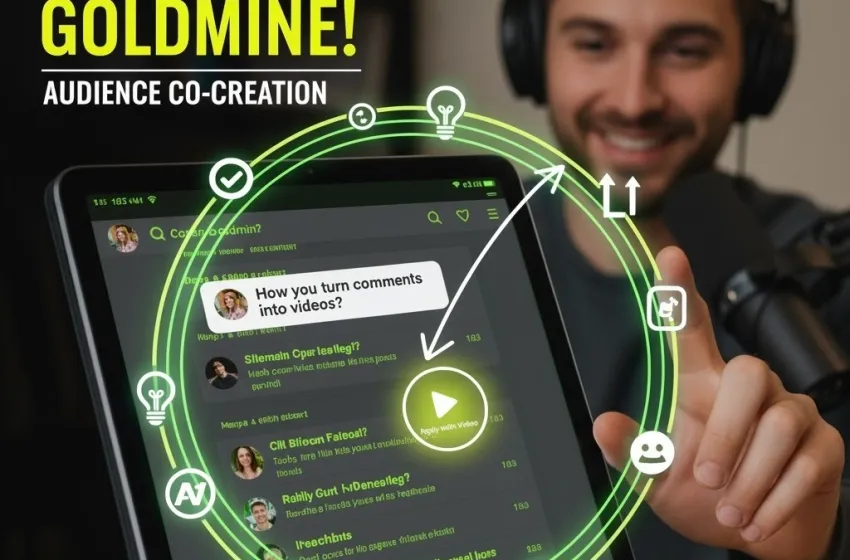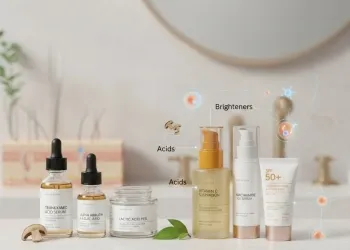Learn the ultimate content hack: turn community comments & audience feedback into fresh videos.
In the fast-paced world of digital content creation, consistency and relevance are the twin pillars of success. Content creators often face the daunting task of constantly generating fresh, engaging ideas. But what if the next big idea wasn't some complex brainstorm session away, but rather hiding in plain sight—in your comment section?
The comments and direct messages you receive are not just applause or critique; they are a rich, untapped reservoir of audience-validated content ideas. By adopting a system to turn your community feedback into polished content, you create a powerful, self-sustaining engagement loop. This strategy instantly validates your audience's concerns, making them feel seen and heard, while simultaneously guaranteeing your new content will resonate because the topic was user-requested. This is arguably the most powerful, low-effort content hack available today.
The Power of Audience-Validated Content
When you create content based on a top comment or a recurring question, you bypass the guesswork of traditional content ideation. You already know there's demand. This shift transforms your content strategy from a monologue into a dialogue, fostering genuine connection and building a loyal, active community.
This approach is the essence of effective content sourcing. Instead of relying purely on market trends or personal intuition, you let your audience be the focus group. This methodology naturally integrates UGC ideas (User-Generated Content) into your formal content calendar, making your output more diverse, authentic, and inherently trustworthy.
The Workflow: Turning a Comment into a Brand-New Video
The most effective and high-impact way to execute this strategy is by creating a video—one of the most engaging content formats available—specifically as a direct response. This is the definitive workflow for turning the most-liked or most-asked question in your comment section into a brand-new video.
Phase 1: Identification and Validation (The Sourcing)
- Systematic Review: Dedicate 15-30 minutes per week to reviewing comments across all your platforms (YouTube, Instagram, TikTok, Blog, etc.). Use filters to sort by "Most Liked" or "Most Engaged."
- Identify High-Signal Comments: Look for two key types of comments:
- The "Volume" Question: The same core question or problem asked by multiple, distinct users across different posts.
- The "Velocity" Question: A single comment that has received an unusually high number of likes or subsequent replies (e.g., "Yes! I want to know this too!").
- Validate the Topic: Once a topic is identified, search your own content archive. Have you already covered this? If yes, the new content will be an updated, deeper dive. If no, you have a validated, net-new idea. This step formalizes your content sourcing.
Phase 2: Production and Recognition (The Creation)
- Draft the Script/Outline: Structure your video around the user's question. A simple structure works best:
- Hook: Start by stating the user's exact comment or question.
- Core Content: Provide the comprehensive answer, demonstration, or tutorial.
- Call-to-Action: Ask the audience for their next question.
- Acknowledge the Source: This is the critical component for building community. Screen-capture the original comment (or quote the user by name/handle) and feature it prominently at the start of the video. This showcases audience co-creation in action.
- Use the "Reply with Video" Function: On platforms like TikTok and Instagram Reels, there is a built-in feature to reply with video directly to a comment. This is the most efficient way to execute this hack. It immediately notifies the original commenter and threads the new video directly to the initial point of inspiration, showcasing the engagement loop.
Phase 3: Distribution and Amplification (The Loop Closer)
- Initial Launch: Publish the new video, ensuring the title and description clearly state that it is a direct response to a community question (e.g., "Your Top Question Answered: How to [Topic]").
- Close the Loop (The Acknowledgment): Go back to the original comment or message thread and personally reply to the user, linking them to the new video. Use a phrase like: "I turned your question into a full video explanation! Here's the link: [Video Link]." This personal touch is incredibly powerful and closes the engagement loop beautifully.
- Cross-Promotion: Share the new video across your other platforms, emphasizing that the idea came from the community. Use this opportunity to solicit more community feedback for future videos. This is your most powerful method of content sourcing moving forward.
Leveraging UGC Ideas and Audience Co-creation
This entire process is a sophisticated method of incorporating UGC ideas without needing users to submit full videos or posts. The idea itself is the user-generated asset.
When you consistently showcase that you take your audience's input seriously, you invite a deeper level of participation. This creates a culture of audience co-creation, where fans feel they have a stake in your success and direction. They are no longer passive consumers; they are active partners in your content journey. This level of intimacy and collaboration is what drives modern digital success.
The Creator's Advantage: Low Effort, High Impact
This content strategy is low-effort because the most difficult part of content creation—ideation and validation—is done for you. The comments hand you the idea on a silver platter, along with proof that an audience segment desperately wants the answer.
By dedicating a small part of your content calendar to answering these audience-driven questions, you achieve an unparalleled level of relevance. You move beyond creating content you think your audience wants and focus purely on creating content you know they need. This systematic approach to leveraging community feedback is the secret weapon of the most successful creators today. It’s an efficient, authentic, and highly scalable way to ensure your content always hits the mark.



































